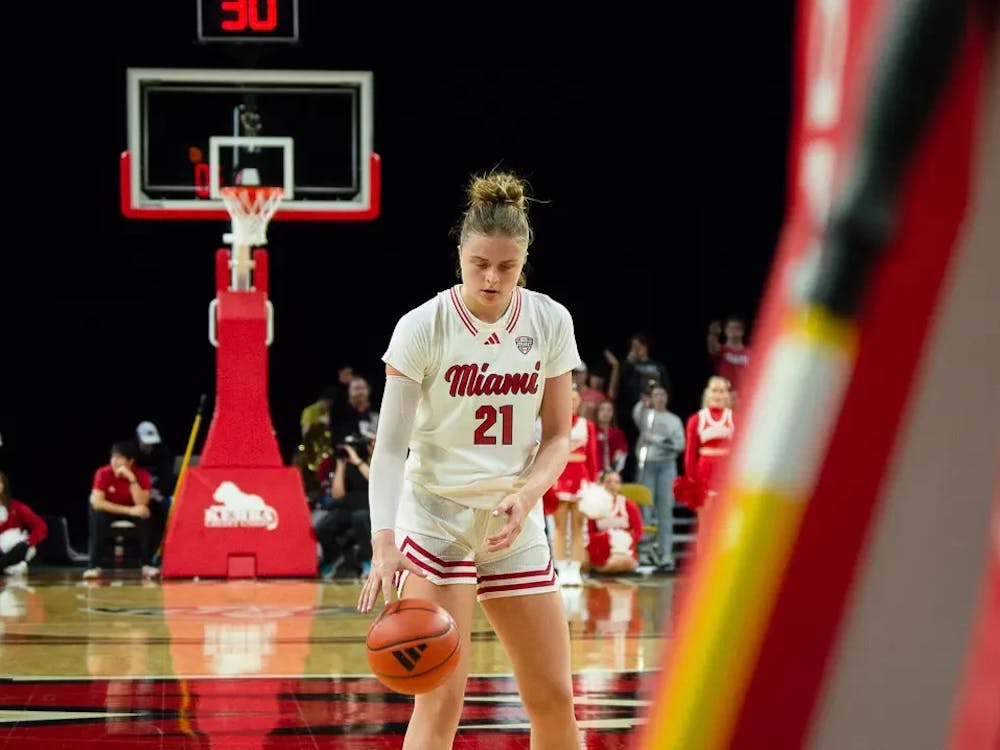Gavin Rohrs, a high school offensive lineman who’s considered a 3-star recruit (out of five stars), announced his commitment to Miami University’s football program on his Twitter account earlier this month.
The announcement may have come as a surprise to some, but not for anyone who follows the team’s assistant coaches on Twitter. Prior to Rohrs’s announcement, no less than 14 Miami assistants tweeted in anticipation of his commitment.
“When we are tweeting stuff out, it’s to tell the fans, like, hey, we got some big news, and kind of get people on pins and needles,” wide receivers coach Israel Woolfork said.
Though this may seem normal to a lot of high school and college students, the Internet and social media being such an important part of recruiting is a relatively new concept.
Twitter, Instagram and YouTube are essential now, whether coaches are trying to get in contact with a player or just see their highlights. High school recruiting websites like Rivals or 247Sports are also frequently used.
Woolfork played college football from 2008 to 2012 at Division II Grand Valley State in Michigan, where Chuck Martin was the head coach before moving on to Notre Dame as an assistant. Before YouTube was around, he remembers mailing out DVDs and VHS tapes of his highlights when he was in high school.
“Now, to see where it is, where a kid can literally inbox me with his link to his highlights, his transcripts, and everything being on the phone and accessible in a matter of 30 seconds? It’s wild.”
Before transferring to Miami in 2016 to complete his college career, graduate assistant Jordan Diamond was a four-star recruit who was considered a top-100 player in the class of 2012, and he played at Auburn University at the start of his college career. Even from then to now, Diamond notices a substantial difference.
“It’s been night and day,” Diamond said.
For football coaches who grew up before the social media era, it can feel like trying to navigate a whole different world.
“It’s 100% different than it was ten years ago,” Miami Head Football Coach Chuck Martin said. “I would say it’s completely changed [recruiting].”
Enjoy what you're reading?
Signup for our newsletter
A big reason social media is prevalent in recruiting is how easy it is to get in contact with anyone: potential recruits, their coaches and even parents. It goes both ways, too. Players can easily get in touch with college coaches to sell themselves to their programs.
Martin also recognizes that most of the time, social media is the primary way high schoolers communicate.
“You can DM ‘em all night and then in the middle of the DM you try to call them and they don’t pick up their phone,” Martin said. “I mean, it is the way they communicate. To them, it is a phone call. They don’t have time to be talking on the phone.”
Woolfork and Diamond brought up the same word: branding. For players, social media is perhaps the only place they can showcase themselves and their personalities to the world.
The same thing goes for schools. When the assistant coaches tweet about commitments soon to be made by recruits, it’s really a way to get exposure and generate talk about Miami and its football program.
“It gets that buzz going,” Woolfork said. “Not only is it on your feed, it’s on the next person’s feed that likes it, then someone likes that and then it’s on their feed, so more people are starting to see Miami University and Miami football from the likes and retweets.”



